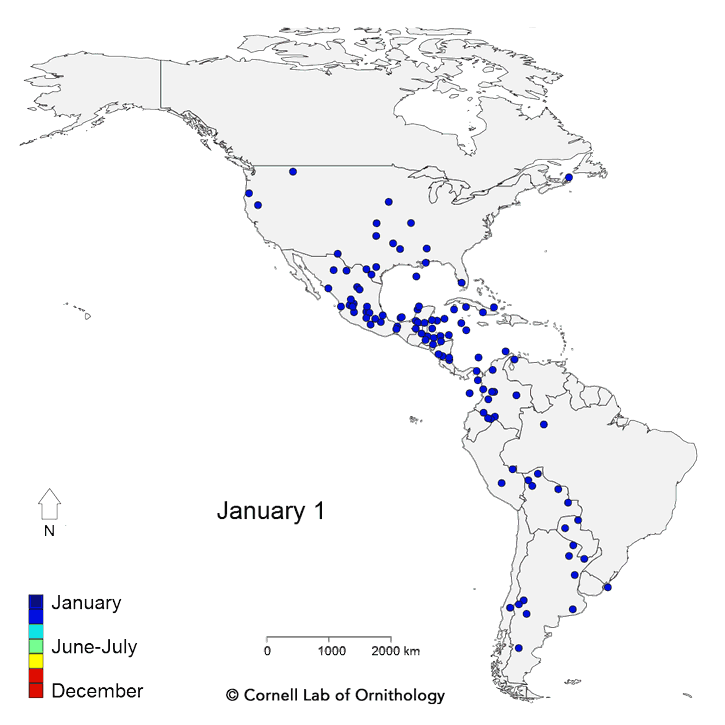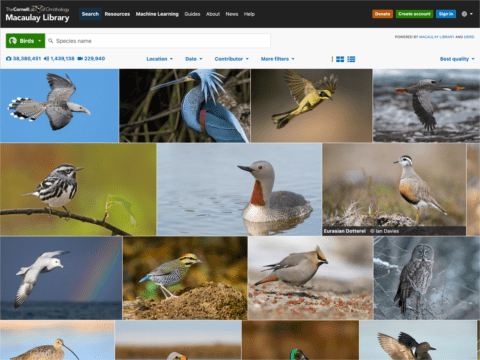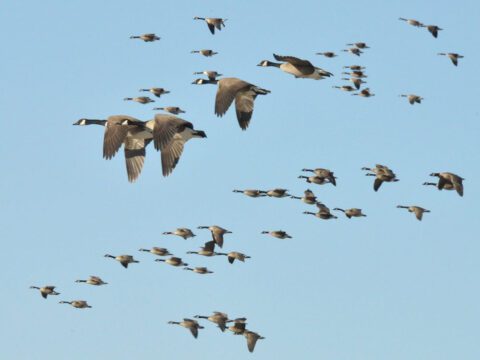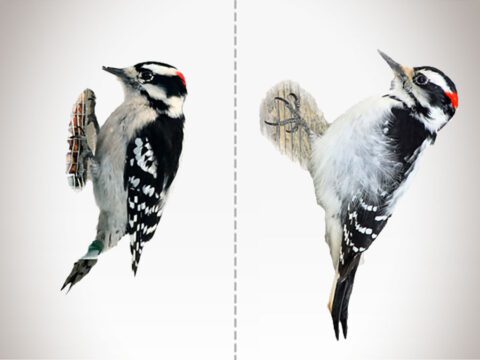Mesmerizing Migration: Watch 118 Bird Species Migrate Across a Map of the Western Hemisphere
By Pat Leonard
January 20, 2016For the first time, scientists at the Cornell Lab of Ornithology have documented migratory movements of bird populations spanning the entire year for 118 species throughout the Western Hemisphere. The study finds broad similarity in the routes used by specific groups of species—vividly demonstrated by animated maps showing patterns of movement across the annual cycle. The results of these analyses were published today in the Proceedings of the Royal Society B.

“We used millions of observations from the eBird citizen-science database,” says lead author Frank La Sorte, a research associate at the Cornell Lab. “After tracing the migration routes of all these species and comparing them, we concluded that a combination of geographic features and broad-scale atmospheric conditions influence the choice of routes used during spring and fall migration.”
La Sorte says a key finding of the study is that bird species that head out over the Atlantic Ocean during fall migration to spend winter in the Caribbean and South America follow a clockwise loop and take a path farther inland on their return journey in the spring. Species that follow this broad pattern include Bobolinks, Yellow and Black-billed cuckoos, Connecticut and Cape May warblers, Bicknell’s Thrush, and shorebirds, such as the American Golden Plover.
“These looped pathways help the birds take advantage of conditions in the atmosphere,” explains La Sorte. “Weaker headwinds and a push from the northeast trade winds as they move farther south make the fall journey a bit easier. The birds take this shorter, more direct route despite the dangers of flying over open-ocean.”
The study finds the spring migration path follows a more roundabout route but the birds move faster thanks to the presence of strong tailwinds as they head north to their breeding grounds.
For species that do not fly over the open ocean, the study finds that many use the same migration routes in the spring and fall. Geographic features shaping this pattern include mountain chains or isthmuses that funnel migrants along narrow routes.
“It’s an exciting new area of research,” says La Sorte. “By using eBird data and other forms of migration tracking information, we’re getting a more detailed picture than ever before about where and when birds migrate. That’s the kind of information we need to make smart conservation decisions for species that live in vastly different regions during the year. Citizen science makes it possible to do this for populations across an entire hemisphere.”
Reference
La Sorte, F.A., D. Fink, W.M. Hochachka, and S. Kelling. 2016. Convergence of broad-scale migration strategies in terrestrial birds. Proceedings of the Royal Society B, 10.1098/rspb.2015.2588.

All About Birds
is a free resource
Available for everyone,
funded by donors like you
American Kestrel by Blair Dudeck / Macaulay Library



